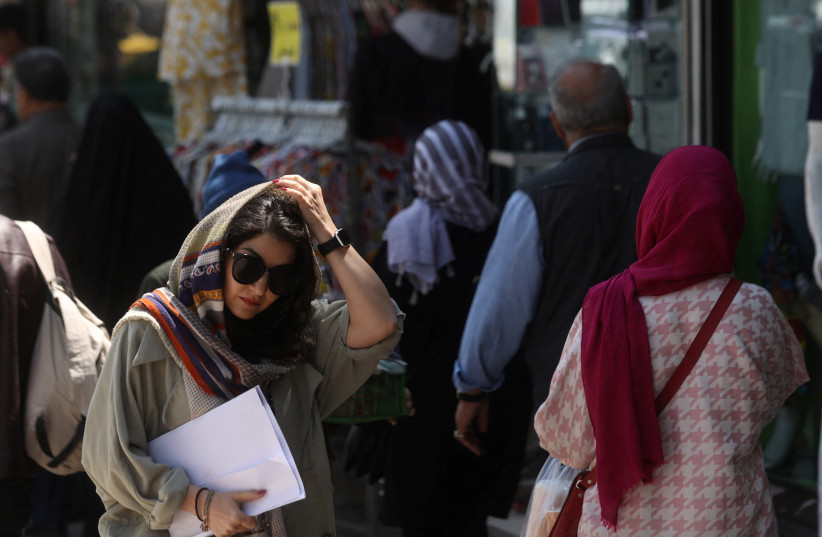by Eli Leon
Amid post-war unrest, Iranians face daily hardships, balancing government pressures with a growing sense of change. Citizens remain uncertain about the future, yet cultural expressions persist.
 |
The day after: Deep feelings of unease and uncertainty have gripped Iran since the 12-day war in June. The New York Times reported on Wednesday that while the regime tries to project stability, a visit to Tehran reveals a complex reality in which many citizens are focused on getting through daily life, alongside a growing sense that change is inevitable.
Reporters from The New York Times traveled to Iran to assess the situation on the ground. According to their account, the recent conflict has touched every sphere of life.
One example was a surrealist art exhibition at a gallery outside Tehran that had been slated to open in June but was postponed. The gallery’s owner, Houman Dayhimi, described the atmosphere as “surreal,” with artists stuck at the gallery watching “fireworks,” his term for missiles streaking across the sky and flashes of explosions as quoted in a CNN report.
Dayhimi said his gallery is located in a former furniture factory that went bankrupt due to US sanctions. “We know change is coming, but we do not know what or how. That is what makes it worse,” he said.
Nearly half a century after the Iranian Revolution, people are accustomed to navigating a tense space between government dictates, pressure from foreign powers, and their own identities and desires.

Alongside giant murals glorifying official heroes and Friday-prayer chants of “Death to America,” one can also find tributes to beauty and Iran’s ancient Persian history, and some Iranians quietly acknowledge they do not agree with official messaging.
On Taleghani Street in Tehran stands a two-story building that once housed the US Embassy and today serves as the “Den of Espionage” museum. The sign over the entrance still reads “Embassy of the United States of America,” but inside are skulls, bones, and a distorted Statue of Liberty.
The museum documents the 1979 hostage crisis, when Iranian students held 52 Americans for 444 days, and the failed 1980 rescue mission, in which eight US service members were killed. Exhibits focus on alleged American espionage, including spy equipment and the reconstruction of shredded documents left behind by US staff.
Despite the museum’s effort to portray American interference in Iran’s affairs, annual visitors have dropped sharply since June, to about 5,000 a year, mostly tourists from Russia and China.
Beyond politics, many citizens are struggling with day-to-day hardships. Siavash Naeini, a 59-year-old taxi driver, is fighting to support his family.
He says his business has fallen by 70% since June, due in part to GPS signal disruptions the authorities employ to hinder targeting by Israeli or American aircraft, disruptions that also cripple ride-hailing apps such as Snapp! Naeini, who has been diagnosed with cancer, said he was forced to sell his wife’s jewelry and his carpets to pay for medications that are scarce because of sanctions and, when available, fetch exorbitant prices on the black market.
Even within this strained reality, cultural expressions persist.
Tehran restaurant named after controversial figures
A Tehran fast-food restaurant is named “Bobby Sands Burger,” after the Irish republican who died on hunger strike and who, for many Iranians, symbolizes freedom and liberation. In the city center, students gather at Café Godot, named for Samuel Beckett’s play.Its owner, veteran director Homayoun Ghanizadeh, said that the “existential tragicomedy” resonates with Iranians waiting for change, much as the play’s characters wait for Godot, who never arrives.
The feeling of waiting and uncertainty about the future, hovering between hopes for religious redemption and expectations of social change, remains palpable among Iran’s citizens.
Eli Leon
Source: https://www.jpost.com/middle-east/iran-news/article-870515
No comments:
Post a Comment